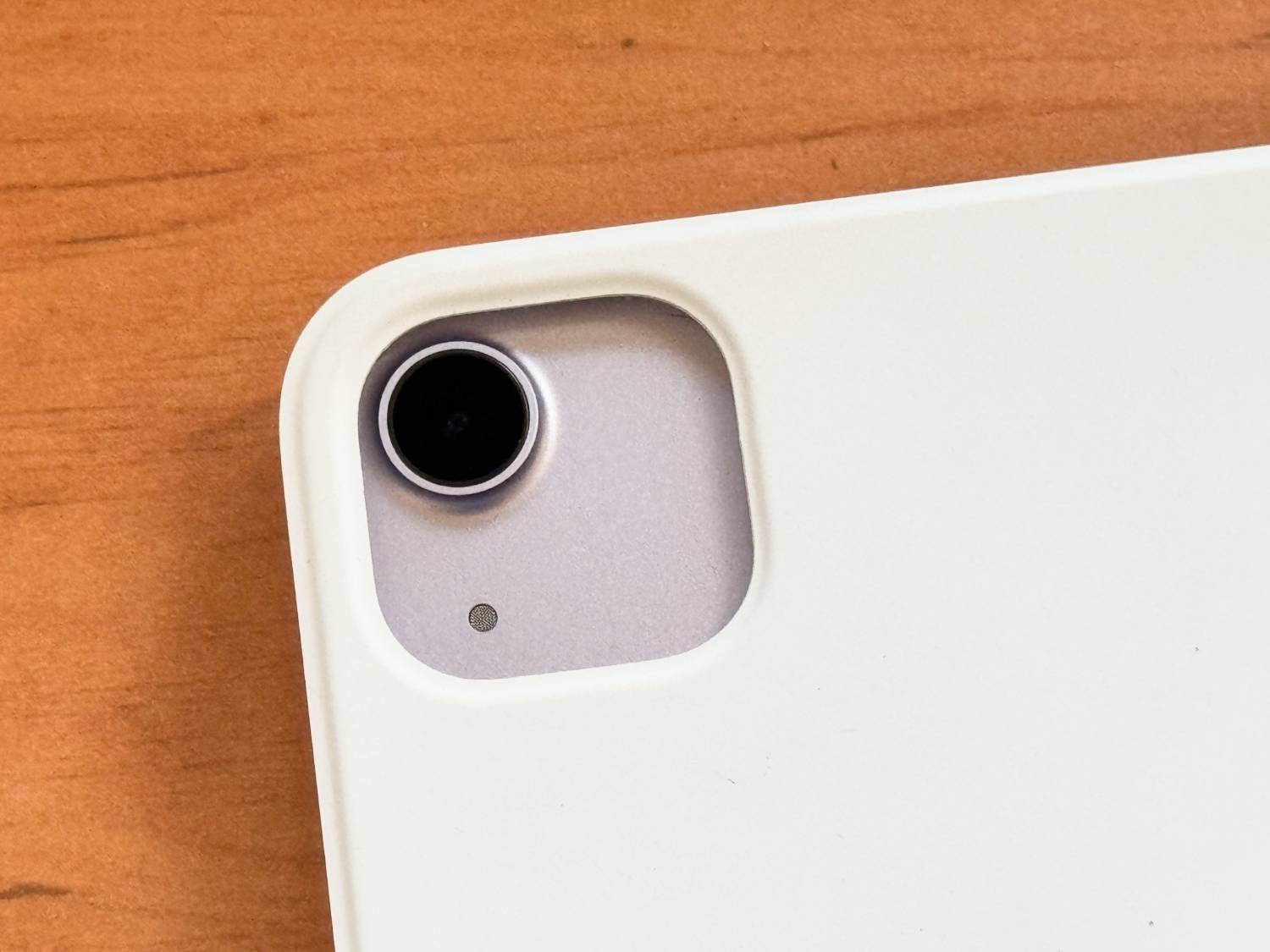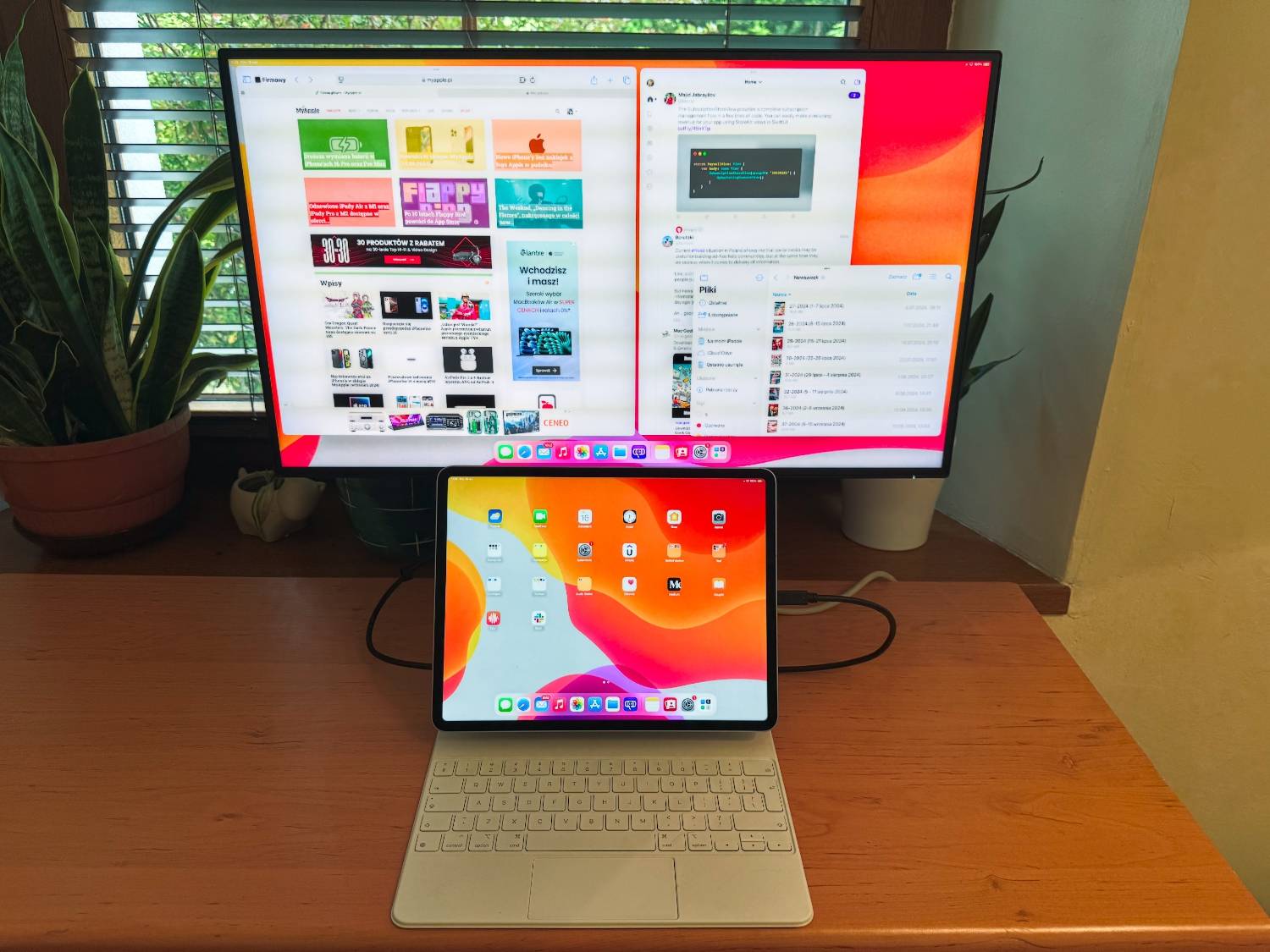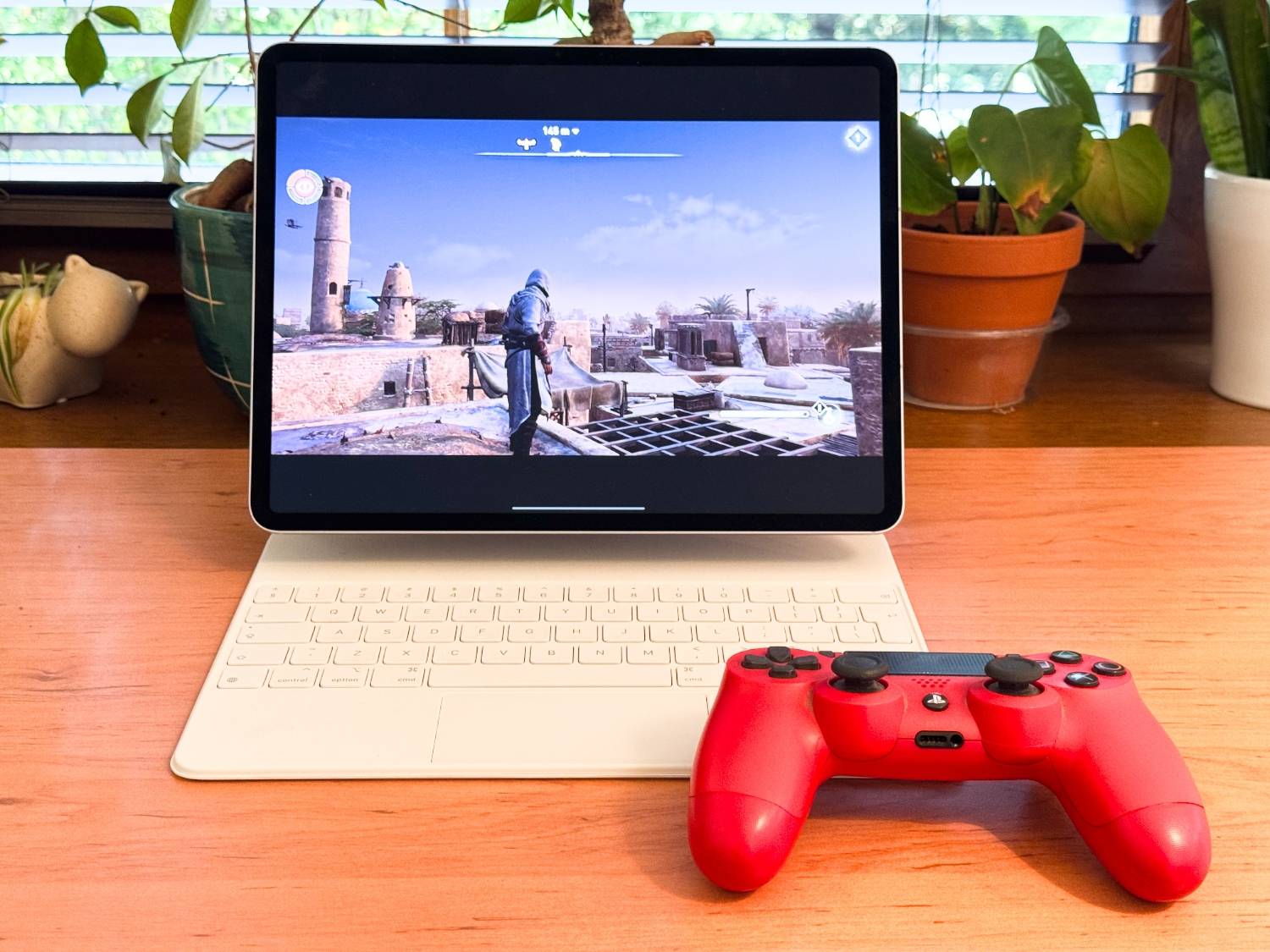After testing the 11-inch iPad Pro with the M4 chip, it’s time for the latest iPad Air with a completely new 13-inch screen size and the M2 chip.
What is outside and inside
It’s worth noting that until this year’s launch, 13-inch (or rather, 12.9-inch) screens were only available for the iPad Pro. Apple has expanded and somewhat unified the iPad Air lineup.
The new 13-inch iPad Air with the M2 chip has an aluminum casing (fully recycled). The device is equipped with a 13-inch Liquid Retina IPS display with LED backlighting with a resolution of 2732 x 2048 pixels, offering a brightness of 600 nits. The screen offers a refresh rate of 60 Hz (so it does not support the ProMotion technology available in iPad Pro) TrueTone technology (adapting shades and light intensity to ambient lighting conditions).
The 13-inch iPad Air is equipped with an A2 chip (with an eight-core CPU, a nine-core GPU, and a 16-core Neural Engine), 8 GB of RAM, and the model I tested has 512 GB of storage. There are also models with 128, 256 GB, and 1 TB capacities. I tested the Wi-Fi + Cellular model. The 13-inch screen, of course, determines the size of the device. The 13-inch iPad Air with the M2 chip measures 280.6 × 214.9 × 6.1 mm. The model I tested is slightly heavier (618 grams) than the Wi-Fi-only version (617 grams).
Cameras and speakers
Like the new iPad Pro with the M4 chip that I recently described, the new iPad Air also has the front camera moved to the longer side, because iPads are definitely more often used in a horizontal position. The iPad Air is not equipped with a FaceID facial scanner, but with a TouchID fingerprint reader located in the wake/sleep button. The latter works flawlessly and every time it correctly scanned my finger and unlocked the iPad.

The iPad Air is equipped with two stereo speakers and a front and rear camera/camera. Both have a resolution of 12 megapixels and a slightly different light. The rear camera has a lens with a brightness of f/1.8, and the front one with a brightness of f/2.0. It is worth noting that, unlike the iPad Pro, the iPad Air does not have a lidar for scanning surfaces or augmented reality. The rear camera offers decent quality photos and videos, although it is not a device for photography or mobile video enthusiasts. However, it is quite enough to take photos of documents or anything if we need to illustrate our work with something and we do not have an iPhone on hand. In turn, the front camera does an excellent job with all kinds of video calls and conferences (e.g. via FaceTime) and – importantly – supports the Attention Center function, blurring the background and tracking the user’s face so that it does not leave the frame (of course, within the limits of reason and the physical capabilities of the device).
The two speakers mentioned (compared to the four in the iPad Pro) are still good enough, and the iPad Air offers sound that is better than many a small Bluetooth speaker. It is suitable for listening to music, watching movies or playing games if we do not want to use headphones at the moment. The sound is selective and bright with a slightly withdrawn midrange in relation to the top and bottom.
e.g
The iPad Air 13″ tested by us is a Wi-Fi + Cellular model. However, we will not find in it the characteristic tray for the SIM card that slides out with a paper clip or a special tool included with previous models using a cellular connection. The new iPads use only eSim technology, i.e. a virtual SIM card. Such a card in the form of a QR code can be ordered from your operator and scanned using the built-in camera. You can also choose one of three global Internet access services (1GLOBAL, aloSIM and GigSky).
Battery
The 13-inch iPad Air is equipped with a 36.59 Wh lithium-polymer battery. Apple declares that it offers 10 hours of browsing the web or watching video over Wi-Fi and up to nine hours over a cellular network on a single charge. With my mixed work, and even with the Magic Keyboard connected, I managed to achieve these results. Of course, there are activities, applications and games that significantly increase power consumption, but the results are still very satisfactory.
Work, learn and play with iPad Air 13″
Comparing the specifications of this year’s iPad Pro and Air models, it’s easy to see the difference, among other things, in the system used. iPad Pro received the M4 system (what’s more, they are the only devices with such a system for now), while iPad Air received the M2 system. This is a big difference, but still a very big performance jump, because Apple’s systems are simply very efficient, which has been known to Mac users with Apple Silicon systems for several years. The power reserve they offer will be enough for many years to come. As a musician, I know two recording studios where the main workhorses are Mac minis with the M1 system, and their owners do not think about replacing them anytime soon. Hence, the M2 system in the new iPad Air will prove useful in many applications. Which ones? Here, the field is wide.
It is without a doubt a great educational tool for both the teacher and the student. Large screen with stylus Apple Pencil Pro and a full-size keyboard Magic Keyboard It will work well as a computer (instead of a laptop) for writing longer texts, preparing presentations, reading e-books (including e-textbooks), watching videos, taking notes by hand (I love this function and use it at all kinds of conferences and meetings where I need to take quick notes), and even – which I am testing myself with one of my children with dysgraphia – for practicing handwriting and calligraphy. The ability to change the orientation of the brush while painting or writing and also the recognition of the pressure force works well both in writing and drawing. The effects are amazing, especially since the screen responds without any delays. Every time I feel like I am really writing with a pen on glass. I wrote more about the Apple Pencil Pro in the review of the iPad Pro 11″ M4.
I personally use a 13-inch iPad Pro during my free coding lessons as my primary iPad. I can always go to a student and explain a problem on the big screen.
When talking about education and school, I can’t help but mention the calculator in iPadOS 18 and the function of solving manually entered formulas, equations, and functions. This will be useful for every student in math or physics classes or when solving homework.
Importantly, at home or in the office, you can connect the iPad to a monitor and use, for example, the Center Stage function to work better with applications. The built-in USB-C port is not only for charging, it is also a USB 3 port with a bandwidth of up to 10 Gb / s and a DisplayPort port that allows you to connect an external monitor with a maximum resolution of 6K at a refresh rate of 60 HZ. Using the keyboard and trackpad in the Magic Keyboard or an external keyboard and mouse, we can work practically like on a stationary computer with many application windows on the screen. You can also always connect an external keyboard and mouse via Bluetooth. Working in this way will also be appreciated by programmers, who, thanks to the possibilities of the Swift Playgrounds application, can de facto create almost entire programs on the iPad. When connecting an external monitor, the Swift Playgrounds window can be switched to full-screen mode or significantly extended, gaining a lot of workspace for writing code and previewing the application being created. Of course, these features are not exclusive to the iPad Air, but working in this way shows just how efficient this device is.

It is worth mentioning here that the new iPad Airs did not receive – like the iPad Pros – the new Magic Keyboard. This is still the model from a year ago without a separate block of function keys, with a mechanical click in the trackpad (in the new Magic Keyboards for iPad Pros it is a haptic click). Despite everything, there is no reason to complain. The keyboard and trackpad work reliably.
In my review of the 11″ iPad Pro with the M4 chip, I mentioned that I also used it for playing in my band’s rehearsal room. I tested the 13″ iPad Air with the M2 chip in a similar way, and it also did a great job, at least in the GarageBand application. However, if you plan to work in the mobile version of Logic Pro or Final Cut Pro, I think you should rather consider the new iPad Pro with the M4 chip. In addition to greater performance reserves, these applications simply offer more possibilities on that device.
Gaming
As in the case of the tests of the new iPad Pro M4 11″, also in the case of the described new 13-inch iPad Air with the M2 system, I took on one of the most demanding new AAA games, i.e. Assassin’s Creed Mirage, and just like in that test, I used the Sony Dualshock pad for PS 4 to control it. By default, the game starts on the iPad Air with medium settings and this is actually optimal. The game looks very good and, importantly, runs smoothly. It is worth mentioning here that iPadOS 18 has a game mode that gives priority to the currently running game in terms of access to all the device’s resources. The iPad Air obviously heats up more than in the case of other applications, but it does not get hot. However, it is worth investing not only in a game controller but also in a stand or the Magic Keyboard, which significantly improves the comfort of work and play.

I believe that both Apple and Ubisoft (but also other game producers) have risen to the challenge and indeed iPads from both lines – Pro and Air – are able to offer users games from large consoles without any serious compromises. Of course, this is not an offer for gaming maniacs who change the graphics card in their PC every year or two, but for users who are looking for a versatile tool for work and study, on which you can also play your favorite console titles, and this is the person writing these words.
iPad Air is a truly personal computer
The new iPad Air is, in my opinion, the embodiment of the idea that the iPad can effectively replace many other devices, including a desktop computer. Of course, not for every user (it won’t replace it for me). However, it is a versatile device for someone who does not need several devices and – last but not least – could use it for virtually any activity, from writing, drawing, creating graphics, documents and presentations (e.g. in the iWork package), recording music in an amateur (hobby) band, watching movies, playing games or reading books and newspapers. Virtually everything that an ordinary user needs can be found in this device, especially if you equip yourself with the Magic Keyboard, and additionally connect the iPad to a monitor on the desk. Actually, nothing more is needed. The issue to think about is the choice of screen size and storage capacity, which I leave to you, dear readers.
Source: myapple.pl


